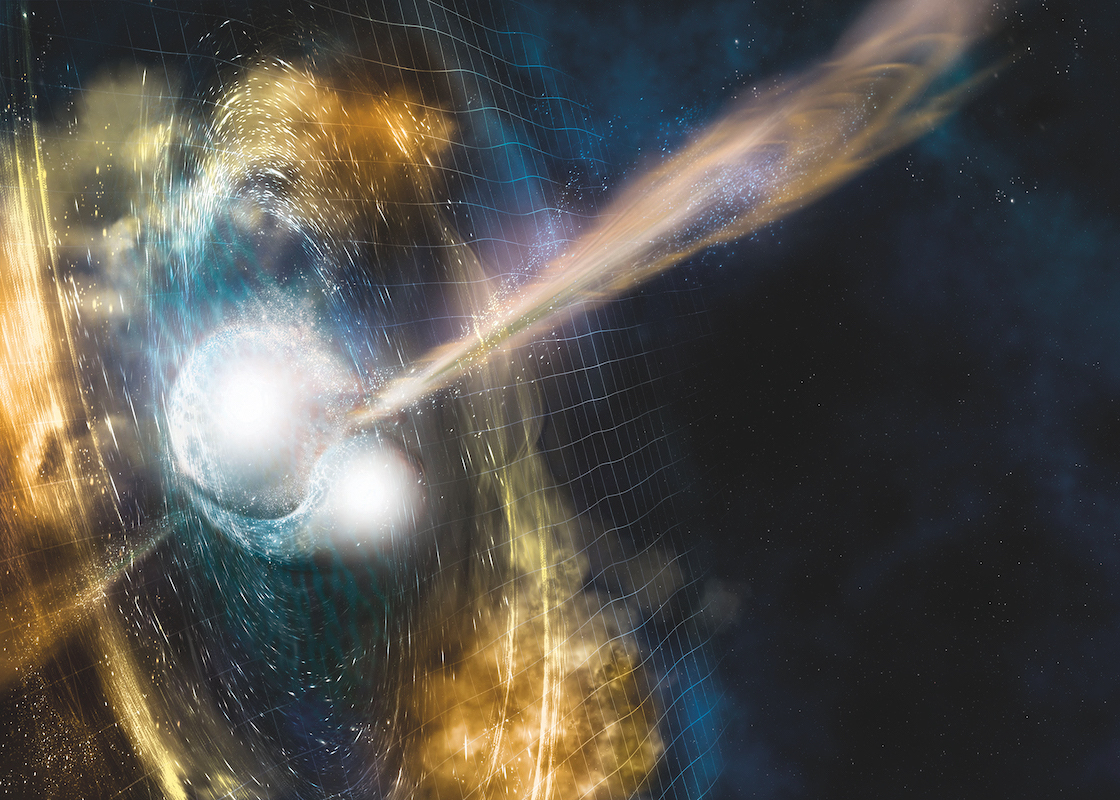In an article to be published in the journal Physical Review Letters, three Brazilian physicists have proven two of the mathematical theorems that support the Israel-Stewart theory, conceived in the 1970s to explain the behavior of viscous fluids—liquids, gases, or plasmas that exhibit resistance to flow—moving at close to the speed of light and interacting with extremely strong gravitational fields. The researchers’ calculations demonstrate the compatibility of the Israel-Stewart theory with Albert Einstein’s (1879–1955) theory of general relativity, including for situations where space-time is curved and ultra-dense matter is formed. An example of one such scenario is the collision and merging of two neutron stars, extremely compact and high-energy celestial bodies.
“Viscosity is a universal characteristic of all fluids that describes their resistance to flow, like when honey runs down the walls of a container. Similar phenomena also occur when neutron stars merge,” explains Jorge Noronha, from the Institute of Physics at the University of São Paulo (IF-USP), one of the authors of the paper. “Although there was a general belief among the scientific community that the Israel-Stewart equations could be used to study this phenomenon, no one knew for sure before the publication of our paper if they were actually applicable to these cases,” says study coauthor Marcelo M. Disconzi, from Vanderbilt University in Nashville, USA. The third author is Fábio S. Bemfica, from the Federal University of Rio Grande do Norte (UFRN).
From the 1940s onward, many scientists attempted to formulate a theory on viscous fluids that was compatible with Einstein’s ideas. Their attempts, however, always ran into one problem: they violated the principle of causality, which is fundamental to the theory of relativity. Then, almost half a century ago, physicists Werner Israel, from Canada, and John Stewart (1943–2016), from England, seemed to have at least partially solved the problem with a theory that worked with relativity in certain situations. The solutions they proposed, however, appeared too simplistic to consistently predict how viscous fluids behave, considering that space-time can bend and form singularities where matter and energy are compressed into a single point. “Our mathematical proof shows that the Israel-Stewart theory is robust enough to describe the movement of matter in this extreme scenario,” says Noronha.
Project
Hadronic physics in high-energy nuclear collisions (nº 17/05685-2) Grant Mechanism Thematic Project; Principal Investigator Jun Takahashi (UNICAMP); Investment R$1,644,757.82.
Scientific article
BEMFICA, F. S. et al. Causality of the Einstein-Israel-Stewart Theory with bulk viscosity. Physical Review Letters. In press.
